A torn loose seat, sawing clear parts and a Heinkel in British hands: He-111 "Delta Lily" has a story to tell!
About He-111H-6 "Delta Lily", 260 Squadron RAF
Two questions immediately came to my mind when I first heard about this special He-111 "Delta Lily": firstly, I was puzzled why the British had gone to such great lengths to have this He-111 fly for them. Was there so little of their own flying material that it would be worthwhile to operate such a risky aircraft? - well, the garish colours and oversized cockades testify to the danger of being taken out of the sky by one's own side.
My second question was solved more quickly, because when I asked where I could get decals for this interesting marking variant, which I really wanted to build, the manufacturer Exito " had a successful answer ready in the form of a beautiful decal sheet "In Enemy Hands".
The sources I came across reveal some of the essential key data on the "Delta Lily". Originally, the aircraft belonged to the III/KG 4; the identification showed H5+GR. Used in Libya, the aircraft was captured by British troops in mid-1942 under circumstances I do not know. A short time later it appeared in the inventory of the 260th Squadron, which subsequently adapted it for its own use.
The conversion left clear traces: the removal of all weapons is quickly noticeable, but of course the new paint job also catches the eye. The camouflage pattern of the previous owners remained untouched, but two yellow tail bands were added and the bar crosses were painted over with improvised British cockades. Interestingly, some parts remained so transparent that the old markings showed through. This is the case with the cockades on the fuselage, and the blue part of the new "fin flash" on the vertical stabiliser still shows a remnant of the old markings. Whether the aircraft's equipment, such as radios or instrumentation, was also brought up to British standards is unfortunately beyond my knowledge.
In December 1942, the aircraft went into the arsenal of No. 211 Group, which used the Heinkel, now christened "Delta Lily", for transport duties. The demanding climatic conditions as well as an obviously active use by the new owners left clear traces, which not only let the old colouring continue to fade, but also visibly claimed the newly applied markings.
This can be discussed in such detail because "Delta Lily" obviously represented quite a popular photo motif. Thus, an astonishing number of high-quality photographs have been preserved showing an He-111 which, with all the weathering marks mentioned, seems to have been kept in quite good shape.
It is also remarkable that this He-111, despite its chequered history, seems to have survived the war in one piece: a last photo document from 1947 shows "Delta Lily" in a scrap yard in Fanara, Egypt, a town near the Suez Canal. She will probably have fallen victim to the cutting torch soon afterwards.
Finally, I would like to return to the initial question: what made the He-111 H5+GR interesting enough for the new owners to put it back into service for their own side? In terms of its performance spectrum, an He-111H-6 was already rather old-fashioned at this point. As an H-model, Delta Lily was powered by two 1200 hp Junkers Jumo engines. Without a payload, it was possible to fly at just under 400 km/h. The H-6 could tow a maximum payload of 2.5 tonnes, but this had a massive effect on the climb performance and top speed. At the time of its conversion, the He-111 was already well known to the enemy; the mere novelty value is unlikely to have prompted the British to reactivate this aircraft.
For me, the only explanation is that there was a real need for transport aircraft. This, mixed with the certain exoticism of the unusual as well as the triumph of the victor to use a captured aircraft himself, will probably have led to this particular He-111. However, if the esteemed readers of these lines have further information on the subject, I will be very happy to learn something new and to find out more about "Delta Lily"!
About the building process:
For this project I used the Revell-Monogram kit, which is now a bit old but has a good reputation for a reason. Looking at its year of publication 1994, two remarks are in order: on the one hand, the moulds must have been considered appealingly good thirty years ago in terms of details and fineness of the structures, on the other hand, today's expectations and possibilities make a few improvements inevitable.
Despite this: the use of etched parts is mainly limited to the cockpit, which is easy to see. For this, Eduard offers excellent material, the use of which makes perfect sense for the fully glazed nose. I also added additional wiring to the backs of various instrument panels and used etched parts from the scrap box for further detailing.
What I could not have known at this stage of construction: during the subsequent sanding, the pilot's seat inside the already carefully closed and filled glass bow came loose due to the "rough" treatment of the model body. After it ran "amok" with every movement and threatened to break off further parts - and a repair was unavoidable anyway - I had to saw open the glass bow, reattach the seat - this time especially stable - and glue, fill and sand the whole thing again. The construction photos bear witness to this action, which I would have gladly done without.
Unfortunately, I cannot praise the accuracy of fit of the parts. Especially around the engine nacelles, which are built up in several parts, but also at the connections of the wings to the underside of the fuselage there were gross inaccuracies, which led to a corresponding additional effort.
Apart from that the construction was easy; on the outside I only exchanged the exhaust systems for new ones made of resin, the same was done with the tyres. I can recommend both as a worthwhile investment that clearly improves the appearance. Afterwards the pitot tube was exchanged for one made of two syringe needles pushed into each other.
The Exito decals were wonderful to work with. Opacity, colour tone and precision of the print were convincing, as was the quality of the carrier film: even with large-area decals, any tendency to "silver" was quickly averted.
Even though I will revert to ICM's kits for future He-111 projects, Revell-Monogram's time-honoured moulds have given me great pleasure and a whole lot of new modelling experience. I will remain faithful to the "loot aircraft" theme even after this British He-111; where else do you get supposedly old familiar things served up in highly unusual and colourful new clothes?
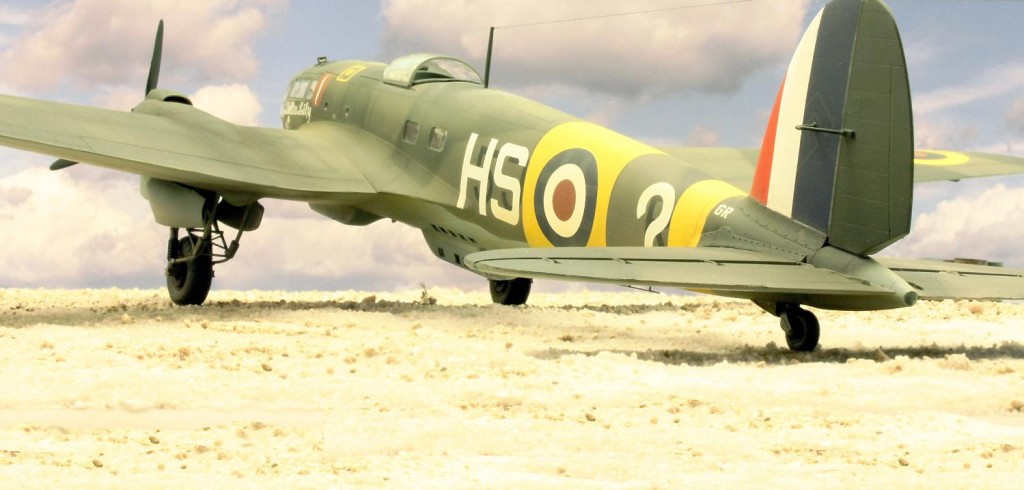
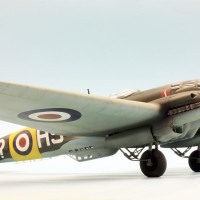
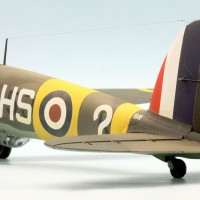
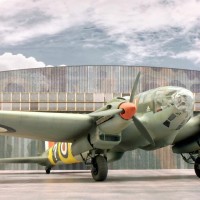
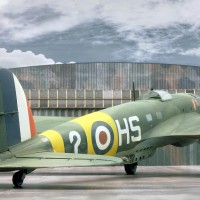
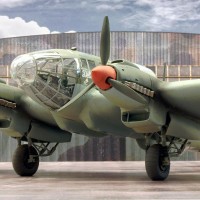
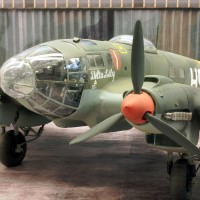
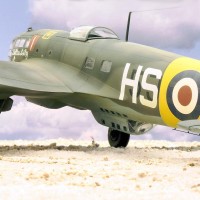
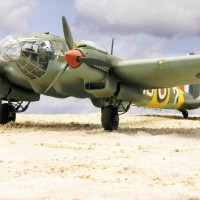
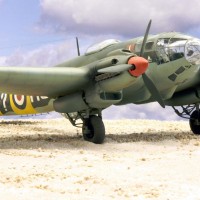
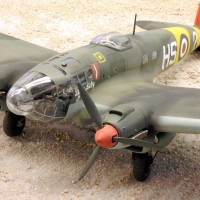
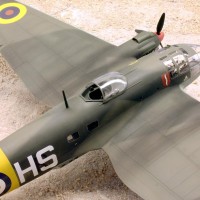
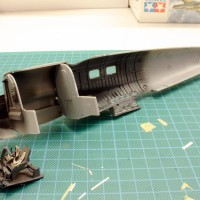
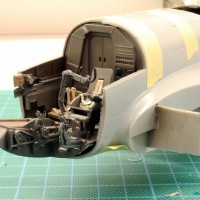

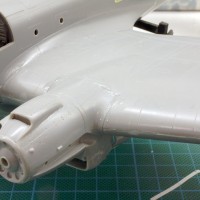
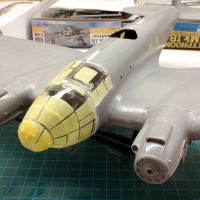
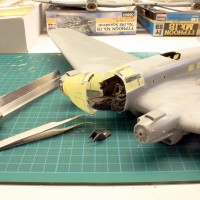

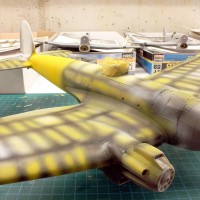

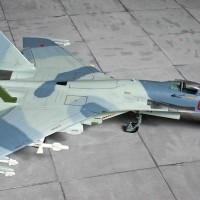

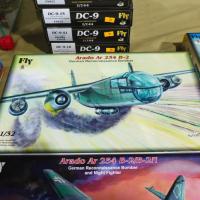
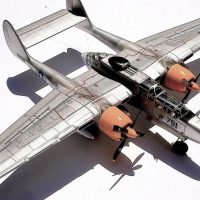
A vary interesting result @rsachsenhofer. A different look indeed!
About 25 years ago, I had the chance to go inside the Confederate Air Force (commemorative Air Force now) CASA 2111, I was amazed at how small it was inside! Smaller even than a B-25 (sit in the cockpit of a B-25, you feel like you're sitting in an old VW Bug - sit in this cockpit and you feel like you're sitting in an old VW Bug full of skiing gear)
Tom, an illustrative comparison! I once had the opportunity to stand in front of an He-111 in Hermeskeil, Germany, and was also impressed by how small this bomber looked. Anyway, thank you very much for your words!
Another masterpiece, Roland!
A unique subject with a really interesting story!
Thank you my freind!
You did an excellent job on this 111, Roland @rosachsenhofer
The remains of the original markings are a nice detail.
John, thank you for your words and the "mention"!
Very nice Heinkel, and the first I see built using this decal option Roland. I’m a big fan of Exito decals for the same reasons you point out. The old Monogram/Revell is still a great kit
Yes, Exito has some nice things to offer! Thank you Pedro!
Congratulations, the kit had difficult characteristics. In the first batch of this He 111 the empennage was warped to starboard, maybe thrown out to quickly out of the form, was this still present here? KR G.M.
Hi Georg, glad to hear from you here! Thank you! The fit was tolerable in many parts, but the transition from wing to fuselage was difficult and the fit of the engine nacelles was completely poor. The fuselage half shells, on the other hand, did not cause me any problems.
Thank you! The fit was tolerable in many parts, but the transition from wing to fuselage was difficult and the fit of the engine nacelles was completely poor. The fuselage half shells, on the other hand, did not cause me any problems.
Very good work!
Thank you!
@rosachsenhofer, Fantastic Roland! ? That is a spectacular result from the venerable Monogram kit. It inspires me to pull my kit down from the shelf and look it over again. ? What a beauty! ?
Thank you Gary, I am very pleased that you like -and find this Heinkel inspiring!
Really, really, REALLY well done.
Thanks a lot!
Great build, article and photos, Roland. The British use of this captured plane is a bit of tribute to the soundness of this Heinkel design. Despite the He-111's main weakness as a combat plane (i.e. poor defensive armament), its qualities as a flying machine are quite excellent. As Tom Cleaver noted, the Spanish use of this plane - into the 1960s is another tribute. And those Spanish CASA 2111's will live on as movie legends ("Patton" and "The Battle of Britain").
That's a beautiful and coherent description though, I can well imagine - thank you for your comment!
A very interesting history here and another outstanding build Roland. Your photography is excellent.
I appreciate your words, thank you!
Roland, a wonderfully unique build, and an excellent presentation! I'll have to look out for Exito decals in the future.
I'm glad to hear that, thank you!
I´ve just lost mi chances to get one of those in my scale...1/72... yours looking great
Roberto, I'm glad you like it!
Looks great, Roland (@rosachsenhofer). I am always looking for unusual color schemes, and this certainly fits the bill. Well done.
Thank you for your interest and your words!